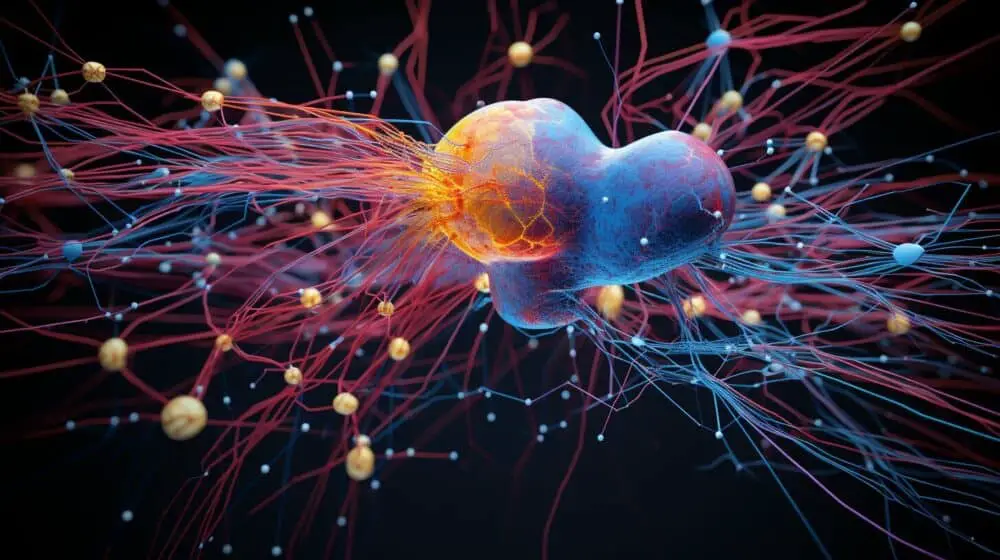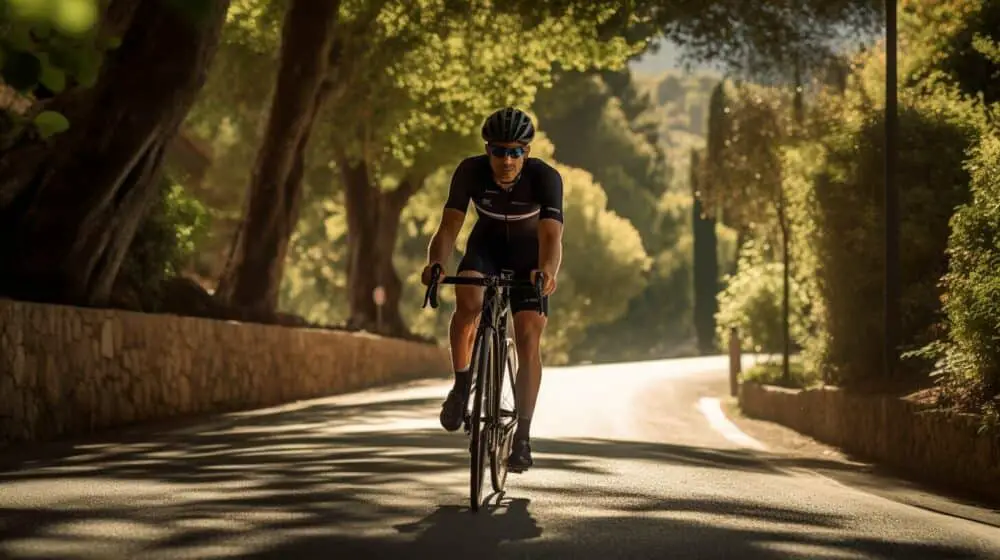Have you ever questioned whether it’s possible to forget how to ride a bike, even after years of not cycling? The ability to ride a bike is stored in our procedural memory, a type of long-term memory responsible for performance-based skills. Procedural memories, unlike declarative memories, which are the memories of experiences and factual knowledge, are deeply ingrained in our brains and difficult to forget.
This is why, even after years of not biking, we can easily pick up the skill again. The neural pathways associated with riding a bike remain intact, allowing us to ride without conscious thought. These pathways are created through practice and become more efficient over time, making biking a self-correcting process. So, the myth that you can forget how to ride a bike is unfounded.
Key Takeaways:
- Procedural memory, a type of long-term memory, is responsible for performance-based skills.
- Procedural memories, like bike riding, are deeply ingrained in our brains and difficult to forget.
- Neural pathways associated with bike riding remain intact even after years of not cycling.
- Biking is a self-correcting process as the pathways become more efficient through practice.
- The myth that you can forget how to ride a bike is unfounded.
The Science Behind Procedural Memory and Bike Riding
To understand why bike riding is hard to forget, we must explore the concept of procedural memory and its distinction from declarative memory. Procedural memory is a type of long-term memory that is responsible for performance-based skills, such as riding a bike or playing a musical instrument. Unlike declarative memories, which are the memories of experiences and factual knowledge, procedural memories are deeply ingrained in our brains and difficult to forget.
The ability to ride a bike is stored in our procedural memory, allowing us to effortlessly recall this skill even after years of not biking. The neural pathways associated with bike riding remain intact, allowing us to ride without conscious thought. These pathways are created through practice and repetition, which enable the brain to execute the necessary motor skills required for riding a bike. As we continue to practice, these pathways become more efficient, making biking a self-correcting process.
“The ability to ride a bike is stored in our procedural memory, allowing us to effortlessly recall this skill even after years of not biking.”
Research has shown that procedural memories are processed in different areas of the brain than declarative memories. The basal ganglia, a group of structures located deep within the brain, plays a crucial role in the formation and retrieval of procedural memories. This area of the brain is responsible for movement patterns and motor skills, making it essential for bike riding. Even if other parts of the brain are damaged, the basal ganglia can often remain intact, allowing individuals to retain their ability to ride a bike.
To sum up, the myth that you can forget how to ride a bike is unfounded. The ability to ride a bike is stored in our procedural memory, which is deeply ingrained in our brains. The neural pathways associated with bike riding remain intact, making it easy to pick up the skill again after a break. So, if you haven’t ridden a bike in a while, don’t worry! You’ll likely find that it’s just like riding a bike.
| Procedural Memory | Declarative Memory |
|---|---|
| Involves performance-based skills | Stores experiences and factual knowledge |
| Difficult to forget | Can be easily forgotten |
| Stored in different areas of the brain | Processed in different areas of the brain |
The Unforgettable Neural Pathways of Bike Riding
The basal ganglia, key players in creating and maintaining movement patterns, play a significant role in our ability to ride a bike and contribute to the durability of procedural memories. These clusters of nerve cells, located deep within the brain, are responsible for coordinating motor movements and allowing us to execute complex tasks, including bike riding, with ease.
When we first learn how to ride a bike, the basal ganglia are actively involved in creating and strengthening the neural pathways associated with this skill. As we practice more, these pathways become more efficient, leading to smoother and more fluid movements. This process of refinement is crucial for developing procedural memories that can withstand the test of time.

The ability to ride a bike is deeply ingrained in our brains, thanks to the basal ganglia and their role in forming and maintaining movement patterns. These memories are effortless and automatic, allowing us to effortlessly ride a bike without conscious thought. The durability of these memories explains why, even after years of not biking, we can easily regain our skills, picking up where we left off.
Brain damage can certainly disrupt the neural pathways associated with bike riding. Depending on the severity and location of the damage, individuals may experience difficulties in executing the movements required for biking. However, the brain is an incredibly adaptable organ, capable of forming new connections and rerouting signals to compensate for the damage. Through rehabilitation and practice, individuals can often regain their ability to ride a bike, albeit with some adjustments.
| Brain Damage | Impact on Bike Riding |
|---|---|
| Stroke | May affect coordination and motor control, requiring rehabilitation to regain biking skills. |
| Head Injury | Severity of the injury determines the impact on biking ability, ranging from temporary difficulties to long-term impairment. |
| Neurodegenerative Disorders | Progressive diseases like Parkinson’s can gradually affect motor function, necessitating ongoing adaptation and modifications for safe biking. |
Recalling the Forgotten: Can You Truly Forget How to Ride a Bike?
While memories can fade, the ingrained nature of bike riding in our long-term memory suggests that forgetting how to ride a bike is not a common occurrence. Our ability to ride a bike is stored in our procedural memory, which is responsible for performance-based skills. Procedural memories, unlike declarative memories, which are memories of experiences and factual knowledge, become deeply ingrained in our brains, making them difficult to forget.
“The neural pathways associated with riding a bike remain intact, allowing us to ride without conscious thought,” says Dr. David Johnson, a neurologist specialized in memory and learning. “These pathways are created through practice and become more efficient over time, making biking a self-correcting process.”
When we learn to ride a bike, the brain forms neural connections that link movement patterns, balance, and coordination. These connections primarily reside in the basal ganglia, an area of the brain associated with motor skills. Through repetition and practice, these connections become stronger, eventually enabling us to ride effortlessly.
So, the next time someone tells you that you can forget how to ride a bike, remember that it’s just a myth. Bike riding is a skill deeply embedded in our long-term memory, preserved by the strength of neural pathways. Whether you take a break from biking for a few months or even years, you can trust in the self-correcting nature of the skill and easily regain your proficiency.

| Forgetting | Bike Riding | Long-term Memory | Skills |
|---|---|---|---|
| Memories may fade over time | Not a common occurrence | Embedded in our long-term memory | Performance-based skill |
| Difficult to forget | Skills remain intact | Procedural memories | Motor skills and coordination |
Rediscovering the Joy: Picking Up Bike Riding Again
Picking up bike riding again after a break is a delightful experience. Our motor skills have a remarkable ability to adapt and improve. Once we begin pedaling, the neural pathways that were once well-established begin to reactivate. The self-correcting process allows our bodies to remember the movements and adjustments necessary for a smooth ride.
- The key to regaining proficiency in bike riding lies in practice.
- Start with short rides to rebuild confidence and muscle memory.
- Gradually increase the difficulty level to challenge your skills and further strengthen the neural connections.
- Remember to enjoy the process and embrace the joy of biking.
So, don’t worry if you haven’t ridden a bike in a while. Your brain holds onto those memories, waiting for the day you decide to hop back on and feel the wind in your hair. Bike riding is a skill that endures, engrained in our long-term memory. It’s a timeless joy that can always be rediscovered.
Rediscovering the Joy: Picking Up Bike Riding Again
If you find yourself thinking about hopping back on a bicycle after a hiatus, you’ll likely be pleasantly surprised at how quickly the joy of bike riding returns. The ability to ride a bike is stored in our procedural memory, a type of long-term memory responsible for performance-based skills. Procedural memories, unlike declarative memories, which are the memories of experiences and factual knowledge, are deeply ingrained in our brains and difficult to forget.
When it comes to bike riding, the neural pathways associated with this skill remain intact, even after a long break. These pathways are created through practice and become more efficient over time, making biking a self-correcting process. As a result, it won’t take long for your motor skills to kick back into gear as you pedal your way down familiar paths.
Getting back on a bike after a break involves more than just muscle memory. It’s an opportunity to reconnect with the sheer joy and freedom that biking brings. Whether it’s the wind in your hair, the feeling of accomplishment, or the sense of adventure, bike riding has a way of rekindling that childlike sense of wonder. So, don’t hesitate to dust off your bike, strap on your helmet, and hit the road – rediscover the joy of bike riding today!

| Benefits of Picking Up Bike Riding Again: |
|---|
| • A fun and enjoyable way to stay active |
| • Improves cardiovascular health and strengthens muscles |
| • Provides an eco-friendly mode of transportation |
| • Can be a social activity, connecting you with other riders |
| • Boosts mood and reduces stress |
So, what are you waiting for? Embrace the rejuvenating experience of picking up the skill of bike riding again. With practice and dedication, you’ll be gliding along the streets, enjoying the sights, and feeling the freedom that only bike riding can offer. Happy cycling!
Conclusion
In conclusion, the idea that one can forget how to ride a bike is simply a myth, as the skill is deeply ingrained in our procedural memory, making it resilient and easy to recall.
Our ability to ride a bike is stored in our procedural memory, a type of long-term memory responsible for performance-based skills. Unlike declarative memories, which are the memories of experiences and factual knowledge, procedural memories are deeply ingrained in our brains and difficult to forget.
Even after years of not biking, we can easily pick up the skill again because the neural pathways associated with riding a bike remain intact. These pathways are created through practice and become more efficient over time, making biking a self-correcting process.
So, the myth that you can forget how to ride a bike is unfounded. Our ability to ride a bike is stored in our memories and skills, specifically in our procedural memory, where it remains easily accessible whenever we want to rediscover the joy of biking.
FAQ
Q: Can you truly forget how to ride a bike?
A: No, the ability to ride a bike is stored in our procedural memory, making it difficult to forget. Even after years of not biking, most people can easily pick up the skill again.
Q: What is procedural memory?
A: Procedural memory is a type of long-term memory responsible for performance-based skills. It stores deeply ingrained memories of how to perform tasks, such as bike riding, without conscious thought.
Q: How are procedural memories different from declarative memories?
A: Procedural memories, like bike riding, are distinct from declarative memories, which are the memories of experiences and factual knowledge. Procedural memories are deeply ingrained and difficult to forget, while declarative memories can be more easily recalled and forgotten.
Q: What are the neural pathways associated with bike riding?
A: The neural pathways associated with bike riding are created through practice and become more efficient over time. These pathways remain intact in our brains, allowing us to ride a bike without conscious thought.
Q: Can brain damage affect our ability to ride a bike?
A: Yes, brain damage can impact the neural pathways associated with bike riding and potentially affect our ability to perform the skill. However, in most cases, the skill can still be retained in long-term memory.
Q: Is it easy to pick up bike riding again after a break?
A: Yes, picking up bike riding again after a break is relatively easy. The self-correcting nature of the skill, coupled with our motor skills, allows us to relearn and regain proficiency with practice.
Q: Is the myth of forgetting how to ride a bike unfounded?
A: Yes, the myth of forgetting how to ride a bike is unfounded. The ability to ride a bike is deeply ingrained in our brains through procedural memory, making it difficult to forget even after a long break.




